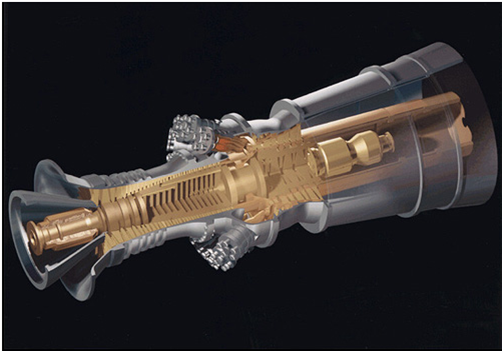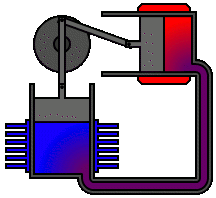 Joy Cone Senior Capstone
Team
Joy Cone Senior Capstone
Team
Project : Improving Efficiency of the Turnbull Oven
Project Updates
Approaches to Improve Energy Efficiency
Two methods were employed to utilize existing energy resources and increase fuel efficiency:
Power Recovery
Waste Heat Recovery
A combined cycle using power and waste heat recovery gave maximum efficiency.
1.Gas Turbines
A gas turbine is also called a combustion engine/jet engine.
It extracts energy from the combustion of fuel.

A gas turbine has three main components :
Thus, the air would be preheated and would require less fuel to raise the air temperature high enough for the operation of the gas turbine.
-
c) Next, the piston in the cooled cylinder starts to compress the gas. Heat generated by this compression is removed by the cooling fins.
- d) In the last phase of the cycle, both pistons move -- the cooled piston moves down while the heated piston moves to the left. This forces the gas across the regenerator (where it picks up the heat that was stored there during the previous cycle) and into the heated cylinder. At this point, the cycle begins again.
2.Stirling Engines

a) In the first part of the cycle, pressure builds, forcing the piston to move to the left, doing work. The cooled piston stays approximately stationary because it is at the point in its revolution where it changes direction.
b) In the next stage, both pistons move. The heated piston moves to the right and the cooled piston moves up. This moves most of the gas through the regenerator and into the cooled piston. The regenerator is a device that can temporarily store heat -- it might be a mesh of wire that the heated gasses pass through. The large surface area of the wire mesh quickly absorbs most of the heat. This leaves less heat to be removed by the cooling fins.
3. Combined Cycle

4. ECM Motors
-
Brushless DC Motor
-
Permanent magnet is on rotating parts (rotor)
-
Series of windings are placed around stator
Commutator and brushes replaced with programmable microprocessor
-
Energy savings of about 50%
-
Not common in factory settings
Home page | Project Overview | Team Members | About Joy Cone Company | Project Updates
Last Updated: April
20, 2009